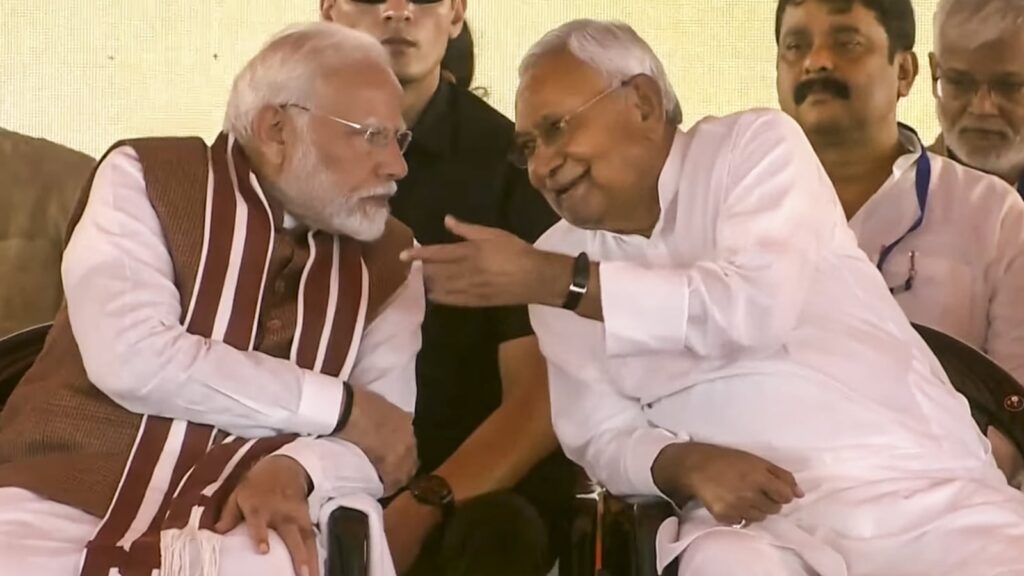New DelhiOctober 24, 2025 04:49 PM IST
First published on: Oct 24, 2025 at 04:49 PM IST
In recent state and national elections, the BJP and the Congress have often clashed over issues such as the Constitution, reservation, and underrepresentation of deprived sections. However, in Bihar, where caste plays a major role in voting behaviour, the two parties have tended to leave a majority of the Scheduled Caste (SC)-reserved seats for their regional allies, as per an analysis of the candidates in the ongoing Assembly polls and results of the 2020 Assembly elections.
In the coming two-phase elections, the BJP is contesting only 11 of the 38 SC-reserved seats in the state. Among the NDA constituents, the Janata Dal (United) led by Chief Minister Nitish Kumar is contesting the highest number of SC-reserved seats at 15, the Chirag Paswan-led Lok Janshakti Party (Ram Vilas), whose core vote base comprises Dalits, has eight SC seats. Headed by Union Minister Jitan Ram Manjhi, the Hindustani Awam Morcha (Secular) is contesting the remaining four SC-reserved constituencies.
It’s almost the same in the Opposition Mahagathbandhan, where the Congress has fielded candidates in 11 SC-reserved constituencies, while its regional allies are set to contest in 29. There will be “friendly fights” in Sikandra (Jamui district) and Raja Pakar (Vaishali district). The Congress and the CPI are both in the fray in Raja Pakar, while the Congress and the RJD will face off in Sikandra.
The RJD is contesting the most SC seats at 20, followed by the CPI (M-L) L in six, the CPI in two seats, and the Vikassheel Insaan Party (VIP) in one seat, where its candidate has filed nomination as an Independent. In one reserved constituency, Ramnagar (West Champaran), the RJD too has fielded a candidate while the Congress nominee’s papers were rejected. The Congress was runner-up in Ramnagar behind the BJP in 2020.
How parties fared in previous polls
Of the 38 SC seats, the NDA bagged 21 seats and the Mahagathbandhan 17 in 2020.
The BJP contested 15 SC-reserved seats and won nine, the JD(U) contested 17 SC seats and won eight, the HAM (S) contested five and won three, and then NDA ally VIP won the only SC seat it contested. In total, the regional parties in the NDA had contested 23 SC-reserved constituencies and won 12.
In the Mahagathbandhan, the RJD contested 19 SC seats in 2020, winning nine of them. The Congress won four of the 13 it contested, the CPI(M-L) L won three of the five seats in its kitty, and the CPI won the only SC seat it contested.
 The NDA had bagged 21 while the Mahagabandhan won 17 of the state’s 38 SC-reserved seats in 2020.
The NDA had bagged 21 while the Mahagabandhan won 17 of the state’s 38 SC-reserved seats in 2020.
In the 2024 Lok Sabha elections, the Congress-led INDIA bloc ran the “Save the Constitution” campaign and dented the NDA in major states such as Uttar Pradesh and Maharashtra. However, the NDA managed to put in a strong performance in the SC seats in Bihar.
In these 38 Assembly segments, the JD(U) led in 11, followed by the BJP and the LJP (RV) in six each, and the HAM (S) in two for a total NDA tally of 25 segments. In the Mahagathbandhan, the RJD led in seven SC segments, followed by the Congress in two, and the CPI(M-L) L and the VIP in one each for an alliance total of 11 segments. In the remaining two segments, Independents were in the lead.
Bihar BJP spokesperson Anamika Paswan said the Nitish Kumar government has brought in welfare schemes, specifically for Mahadalits, and that had led to Dalit voters shifting towards the NDA.
Paswan said since voting is largely caste-based in the state, major parties such as the BJP often accommodate allies that are dominant among local communities by allotting them the SC-reserved seats. She said the undivided LJP had contested separately in 2020, but since the Chirag Paswan-led faction is now back in the NDA, the BJP has given some of the SC constituencies to the LJP (RV) this time.
Congress spokesperson Anshul Avijit said the SC-reserved constituencies had traditionally been his party’s strongholds, but with the rise of coalition politics, wider distribution of these constituencies became the norm during consensus-driven seat negotiations.


